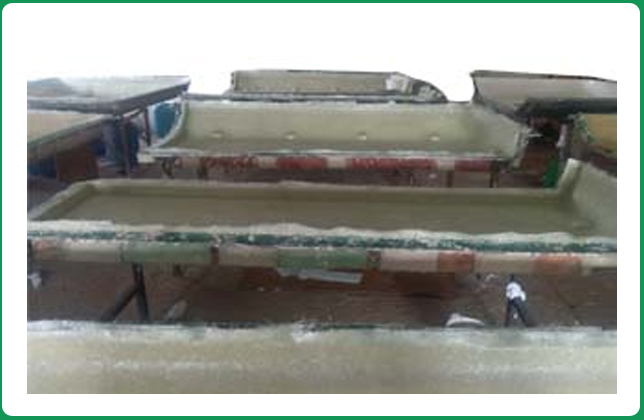
Hand Lay-Up
Hand Lay-Up:
Wet layup forming combines fiber reinforcement and the matrix as they are placed on the forming tool.
Reinforcing Fiber layers are placed in an open mould and then saturated with a wet resin by pouring it over
the fabric and working it into the fabric. The mould is then left so that the resin will cure, usually at room temperature,
though heat is sometimes used to ensure a proper cure. Sometimes a vacuum bag is used to compress a wet layup.
Glass fibers are most commonly used for this process, the results are widely known as fiberglass..

In-house mould manufacturing facility
In-house mould manufacturing facility:
We make our own tooling as per the customer requirements. We have skilled Tooling,
Design & Development team for tooling & to execute new projects.
We take 3D data from the customers to make tooling design & wooden pattern.
We also make mold from the existing part through reverse engineering according to customer requirement.

Vacuum bag molding
Vacuum bag molding :
Vacuum assisted transfer molding (VARTM) uses a partial vacuum on one side of a fiber mat to pull the resin in
for complete saturation. VARTM uses lower plunger forces which allow molding to be carried out with cheaper equipment.
The use of a vacuum may allow the resin to adequately flow and or cure without heating.
This temperature independence allows thicker fiber preforms and larger product geometries to be economical.
VARTM can produce parts with less porosity than regular transfer molding with a proportional increase in casting strength.

Vacuum bag molding
Vacuum bag molding :
Vacuum assisted transfer molding (VARTM) uses a partial vacuum on one side of a fiber mat to pull the resin in
for complete saturation. VARTM uses lower plunger forces which allow molding to be carried out with cheaper equipment.
The use of a vacuum may allow the resin to adequately flow and or cure without heating.
This temperature independence allows thicker fiber preforms and larger product geometries to be economical.
VARTM can produce parts with less porosity than regular transfer molding with a proportional increase in casting strength.